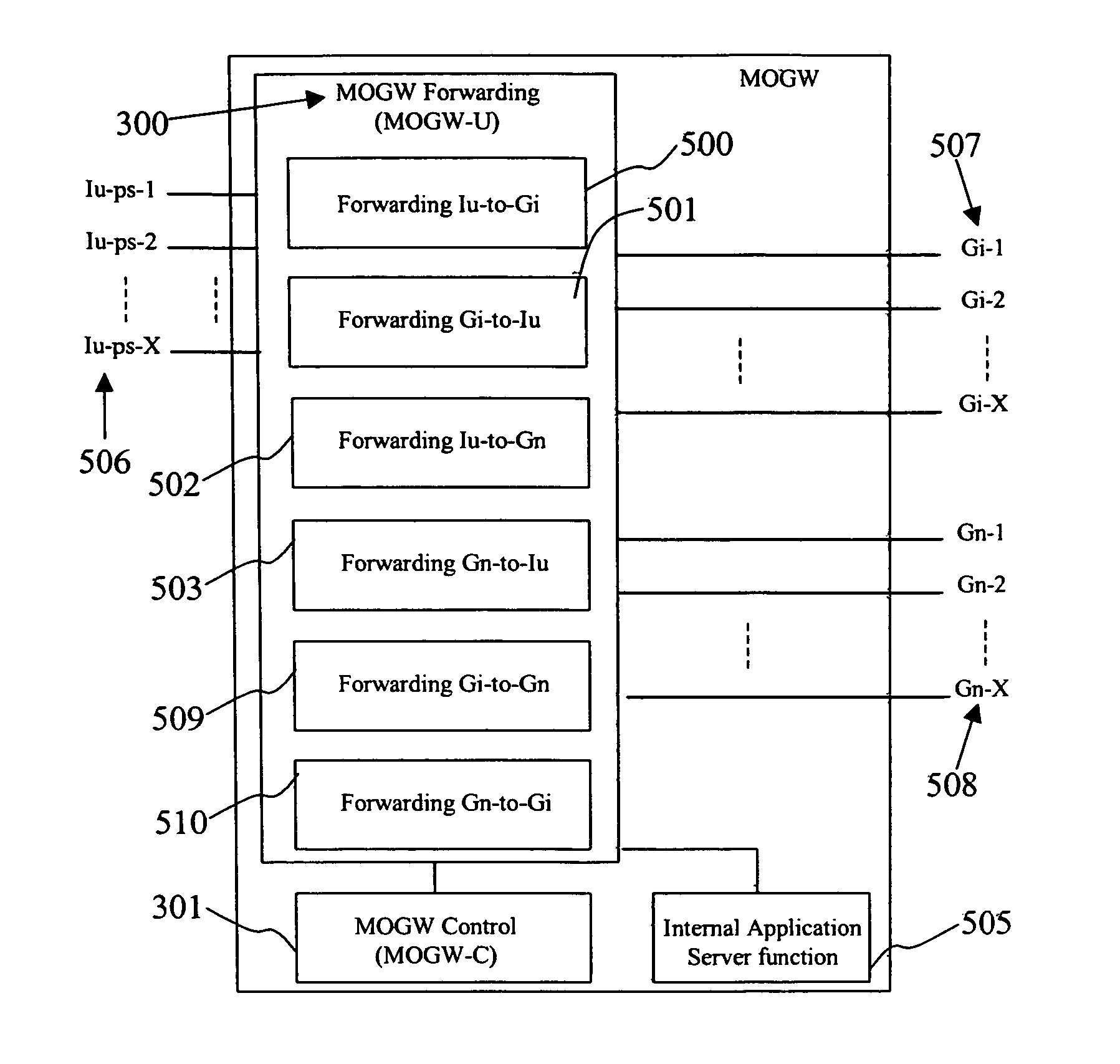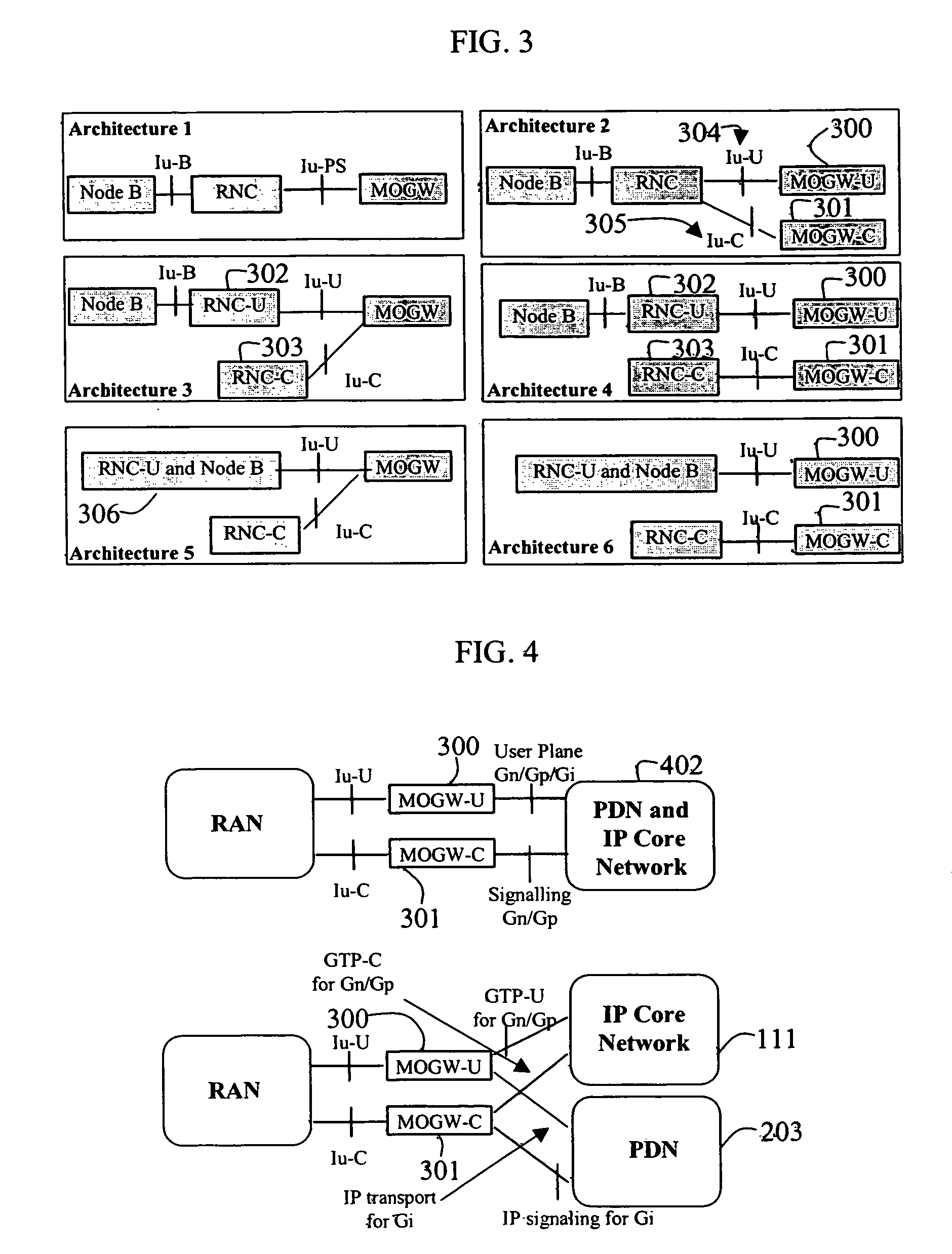Wireless mobility gateway
a wireless internet and gateway technology, applied in the field of wireless mobile internet communications, can solve the problems of inefficient forwarding, inefficient use of bandwidth resources, and inability to optimize data routing, so as to efficiently forward packets and move easily
- Summary
- Abstract
- Description
- Claims
- Application Information
AI Technical Summary
Benefits of technology
Problems solved by technology
Method used
Image
Examples
Embodiment Construction
1.1 Evolved Core Network Architecture
[0041]The evolved network architecture of an embodiment of the present invention is illustrated in FIG. 2. By using a single device to replace SGSN and GGSN, called Wireless Mobility Gateway (MOGW) 200, it is possible to achieve any one or more of the following:[0042]reduce costs (i.e. one product instead of two)[0043]facilitate development of new applications dependent on information which is normally only found deep inside the mobile network (e.g. location-based information)[0044]increase bandwidth efficiency in the mobile packet network[0045]decrease end-to-end delay[0046]simplify network management and deployment
[0047]As described herein, a number of complex functions of the SGSN and GGSN are modified and new functions are added in achieving the benefits listed above.
[0048]The MOGW 200 will be the main data node in the Core Network and it will enable data communication by users on a GSM / EDGE / UMTS RAN 210 to any IP-based packet data network 20...
PUM
 Login to View More
Login to View More Abstract
Description
Claims
Application Information
 Login to View More
Login to View More - R&D
- Intellectual Property
- Life Sciences
- Materials
- Tech Scout
- Unparalleled Data Quality
- Higher Quality Content
- 60% Fewer Hallucinations
Browse by: Latest US Patents, China's latest patents, Technical Efficacy Thesaurus, Application Domain, Technology Topic, Popular Technical Reports.
© 2025 PatSnap. All rights reserved.Legal|Privacy policy|Modern Slavery Act Transparency Statement|Sitemap|About US| Contact US: help@patsnap.com



